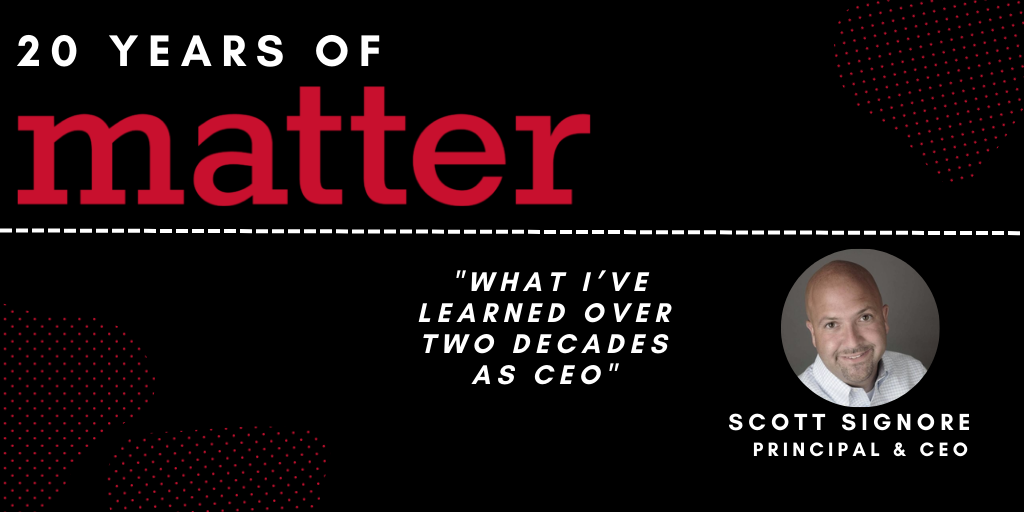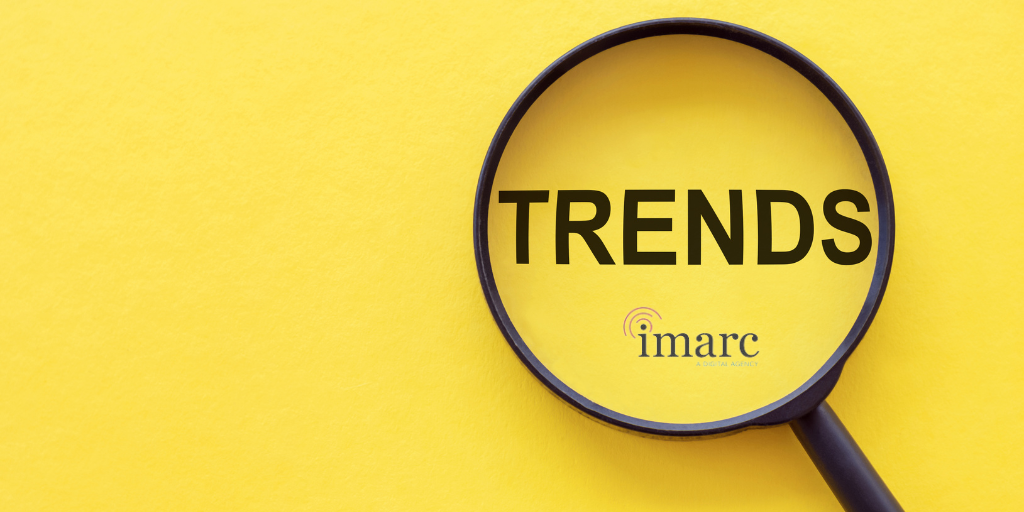Imarc’s digital marketing team has come together to bring you a Q+A focused on effective digital marketing and how to set your brand up for success.
What is vital in preparing for digital marketing in 2022?
Marketers in a digital world are frequent fliers when it comes to change! And 2022 looks to deliver on that promise, but let’s review the core elements for effective digital marketing to make sure those are in order.
First, make sure all owned digital properties are effectively branded and compliant. This encompasses any channels that you have complete control over such as your website and social media. You must also have processes in place to keep those properties organized and updated – we are seeing this to be key during recent employee turnover trends.
Next, create processes to market consistently across advertising, social media, and organic search. The “when” is becoming just as important as the “where” and “what”. When is becoming more important because buyers are often overwhelmed and bombarded with digital messaging and they’ve become comfortable with entire sales cycle interactions being remote, so they are demanding a timely high-quality digital experience as a result.
Timing has always been a key piece for marketers, and we are seeing this trend emerge for user and buyer journeys. To best address the “when” timing in a constantly changing environment, revisit your buyer journeys and personas, and keep an organized MarTech (marketing technology) roadmap and a thorough content calendar strategy. Consider a content audit to make sure public relations, thought leadership, and SEO are aligned.
For a new website, product launch, or changes to a brand, we urge clients to establish a launch campaign that addresses both current users and new audiences several months before the launch.
In digital marketing, both the digital best practices and the audiences we are marketing to are constantly changing. In order to react quickly and be proactive for target audiences, we must be highly organized. Here are a few things to keep in mind:
- Check in on all owned digital properties, make sure brands, compliance, and the foundation is in place for keeping those organized and updated.
- Revisit the roadmap for your MarTech stack, and create documentation for seamless team transitions.
- Outline processes for teams to update, approve, and deploy changes and campaigns.
- Create a content calendar plan as far in advance as possible.
Once a marketing foundation is in place, how can I optimize my efforts?
There are two components we want to cover: reporting dashboards and A/B (or multivariate) testing. From the start, we recommend having an easily accessible dashboard that aggregates analytics from multiple sources: these can include Google Analytics, Google Search Console, Google Ads, SEM Rush, and Social Media platforms. We recommend reviewing dashboard insights monthly to assess and react to changes from Google or trends within your industry. Effective A/B testing begins with a solid plan for what tools will be employed, such as Hotjar or Optimizely, and an outline of what elements will be tested and why. Testing helps teams gain insights to optimize designs, content, usability, and more – with the ultimate goal of increasing conversions.
Key Metric Ideas:
- Pages Per Session: This is one of the best indicators of how people are interacting and engaging with pages of your site. You’ll be able to see if users are able to find information easily. This metric is especially important for new website launches.
- Site Speed: This is a touchpoint metric across the board. From website health to user experience, this is one of the largest ranking factors for SEO.
- Goal Completions or Goal Conversion Rate: What good is website traffic if visitors are not completing the actions you want? Use these metrics to monitor specific Goal Completions and what channel or marketing tactic they came from. Globally, monitor website goal conversion rates and compare to historical performance.
Let’s talk about SEO (Search Engine Optimization) – What should I be preparing for in 2022?
Search Engine Optimization (SEO) is an ongoing process that allows you to build organic traffic over time at no cost to you. A good SEO strategy will essentially “pull all levers” by optimizing across all SEO aspects from technical to on-page, content, keywords, and links.
Technical SEO ensures that your website can be properly crawled and indexed by search engines. It doesn’t matter how good your content is if search engines cannot find it. Additionally, websites should be optimized for mobile users and should provide a good user experience. What does that mean? In simplest terms, websites should be fast, responsive, and easy to use.
On-page SEO, such as keyword-optimized page titles, meta descriptions, and relevant content will help your website stand out. Beyond keyword optimization, Google is specifically looking for quality content that meets users’ needs as well as Google’s E-A-T principle. E-A-T stands for expert, authoritative, and trustworthy.
Finally, links. Quality links are a major ranking factor. Quality is the operative word here, as potentially bad or spammy links will harm rankings and should be avoided. Ideally, you should be looking to earn links from authoritative sites in your industry.
In 2022, Google My Business will officially become Google Business Profile, and Google will officially retire the Google My Business app. The reason for this change is that Google is bringing more of the business profile management directly into Google Search, Google Maps, and those respective apps. Google is encouraging businesses with single listings to manage their profiles in search as opposed to the previous Google My Business console. The existing Google My Business web experience will transition to primarily support larger businesses with multiple locations, and will be renamed “Business Profile Manager.”
Paid Search and Display – How should that pair with SEO?
Creating synergy between PPC and SEO is one of the most important elements of a holistic Search Engine Marketing (SEM) strategy. A disconnect between the two typically goes one of two ways.
With an over-aggressive PPC strategy, you’ll start to cannibalize organic search presence and pay for keywords you would be organically ranking on. On the flip side, if you rely too much on organic presence and don’t invest enough in highly competitive terms or protect brand keywords in competitive industries, you leave an open invitation for competition to outrank your organic presence with paid advertisement.
At Imarc, we utilize a few different tactics to work together to avoid those scenarios. First, and most importantly, communication is key. Our SEO and PPC experts stay in touch as we simultaneously prepare separate strategies. Next, we utilize SEMRush features to identify volume, difficulty, and intent. When a keyword has high volume, high difficulty, and transactional intent, it’s a must-have for PPC. However, from an SEO standpoint, it might be better focusing on long-tail search terms with lower search volume, less difficulty, and informational intent. Once our strategies are in place, we use Google Auction Insights to provide competitive insights on the PPC landscape, to ensure we’re maintaining a reasonable impression share against competitors without overpaying for keywords.
Content Marketing has been around for a while now, are there any new strategies you recommend?
Since content was crowned king by Bill Gates 20 years ago, content strategy has been a topic of stress, success, and much discussion in marketing meetings. The goal was to create a lot of content for audiences and search engines. Now, we are seeing a theme emerge for purpose-led digital transformation and content that can be repurposed for various use cases. Rather than having lots of content served up to audiences, audiences are looking for meaning, an authenticity that is fulfilling. The appeal and inspiration of the content are more important than the volume. Secondly, as digital keeps diverging into more and more properties with more niche audiences, repurposing content for multiple campaigns and user interactions is recommended.
Let’s talk
We are excited to see where digital marketing will take us in 2022! If you’d like to learn more about our approach, discuss our recommendations, or debate emerging trends, we’d love to hear from you.


